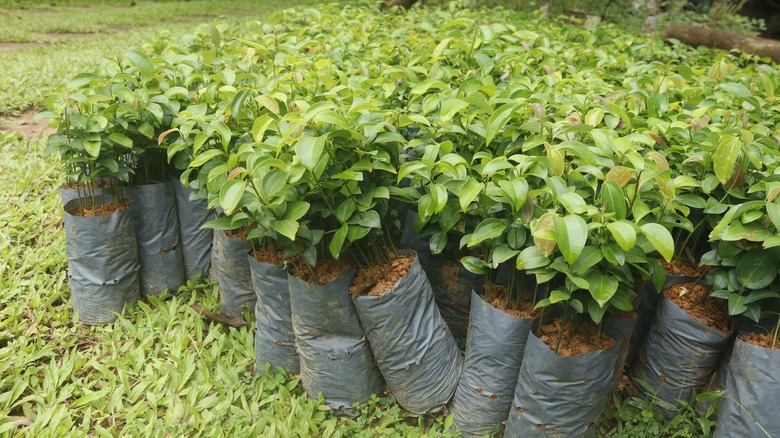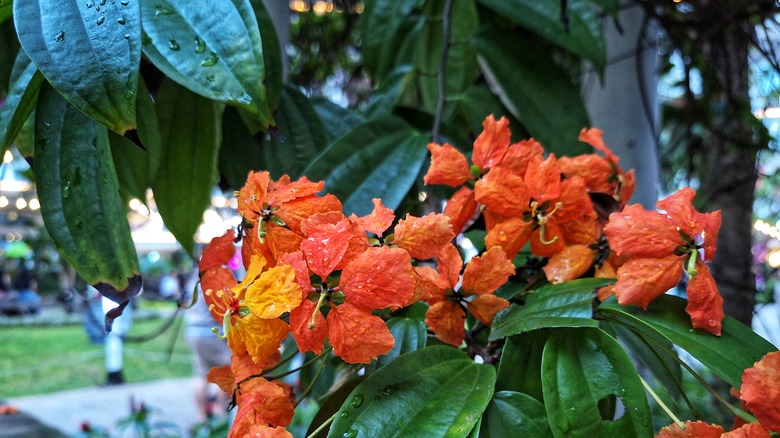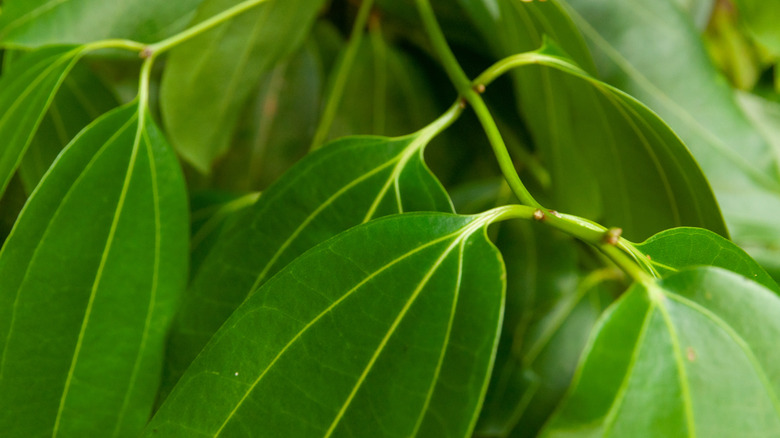Why You Should Consider Growing Cinnamon Indoors
The cinnamon tree (Cinnamomum verum) is a tropical plant that is native to Sri Lanka. It requires a warm, humid climate with plenty of moisture, as young trees need protection from the hot afternoon sun in summer and won't survive in cold climates. This tree can only be grown successfully outdoors all year round in USDA zones 10 through 12. That's why it's better to grow a cinnamon tree indoors during the colder weather and then move it outdoors during summer.
It's the inner bark of the cinnamon tree that's used for making the ground spice that you add to your cooking. Plus, oil from the leaves is also used as a flavoring and to add fragrance to perfumes. The bark and leaves of this tree are fragrant, which is another reason that you might want to grow it indoors — it will add a lovely spicy scent to your home. On top of that, cinnamon is useful for keeping ants out of your house. Growing this tree in a large pot will also keep it manageable because it can reach a height of 50 feet in its native habitat. Apart from these benefits, it's quite an attractive plant with large glossy green leaves that can reach a length of 10 inches but will usually only reach a length of 4 inches when grown in pots.
How to grow a cinnamon tree indoors
The most important thing to remember is that cinnamon trees need warmth and high humidity. Ideal temperatures should be above 80 degrees Fahrenheit, so, as long as your home is kept warm all through winter, your cinnamon tree should be fine. You'll want to choose a fairly large pot that will accommodate the growth of the roots and has plenty of drainage holes. Use a premium potting mix that contains plenty of organic matter but is still free-draining.
Place your cinnamon tree in a bright spot so that it gets plenty of indirect sunlight. Although the tree won't grow much in winter, the new growth will be much denser when the tree gets enough light. If you constantly have the heating on, make sure that your plant is not sitting near any of the vents because these will blow out dry air, which is not ideal. As cinnamon prefers a highly humid environment, you will probably have to increase the humidity around the plant. One easy way to do this is to create a trendy humidity tray for your cinnamon tree. Simply fill a shallow tray with pebbles or small rocks and then add water until it comes halfway up the level of the pebbles. Sit your cinnamon tree on top of the pebbles. As the water evaporates, the humidity around the plant will increase. You can also spray the leaves of the plant with water periodically to add to the humidity.
Transitioning your cinnamon tree to the outdoors in summer
While it's vital to keep your cinnamon tree indoors during winter, unless you live in a tropical region, it's a good idea to put your tree outdoors during summer so that it can get some sunshine and put on lots of new growth. But, you want to do this gradually because exposing your tree to strong sunlight straight away will likely burn the leaves.
To acclimatize your tree to the outdoors during summer, do this in small steps. Start by putting your tree into a shaded spot on your patio or veranda for only a couple of hours on the first day and then extend this time by an hour or so on subsequent days until the tree has spent the entire day outdoors. You can then expose the tree to some morning sun, again doing this gradually until your tree is exposed to around 6 hours of sunlight daily. Remember to protect your tree from the afternoon sun to avoid scorching the leaves. Also, make sure that you keep the plant well-watered as the soil will dry out faster when the plant is outdoors. As soon as nighttime temperatures start to drop in the fall, make sure that you bring your cinnamon tree back indoors for the winter. But, if you live in a warm region, you might want to learn how to grow a cinnamon tree outdoors.


